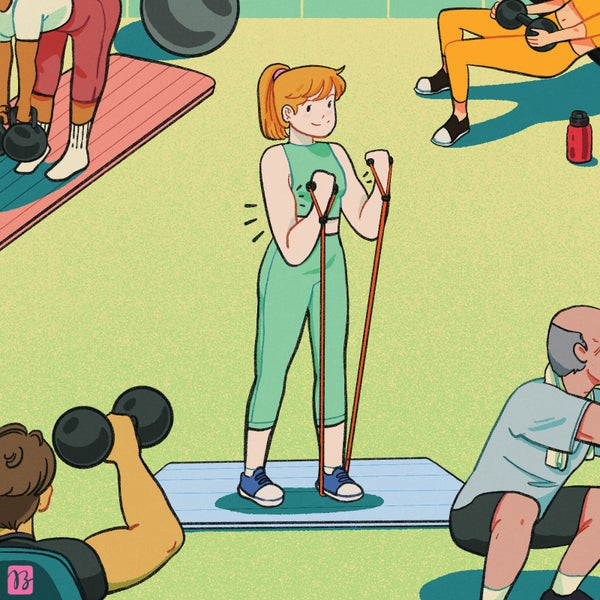Simple Resistance Exercises Improve Overall Health and Reduce Death Risks
Weight training turns out to be as important as aerobic activity for warding off disease
I’ve always been unwilling to be pressed into bench-pressing. Lifting weights seemed the province of serious athletes looking to improve performance or men looking to bulk up. Instead I walk several miles every day and do yoga regularly. But although research into resistance and strength training is still catching up to that on aerobic exercise, there’s growing evidence that muscle-strengthening routines confer a host of physical and cognitive advantages, some of which can’t be achieved through aerobic workouts alone.
We do not just need to get our steps in; we need to get in reps—as in curls, push-ups and squats. That’s why the federal Physical Activity Guidelines for Americans, the World Health Organization, and others specify two or more sessions a week of muscle-strengthening activities. They mean weight-bearing exercises of moderate or greater intensity involving all major muscle groups. That’s in addition to 150 to 300 minutes of moderate to vigorous aerobic activity. Yet at least three quarters of Americans fail to hit both the aerobic and the strength targets, and the latter is especially rarely met.
All exercise is a form of physical stress. Done correctly, it creates better fitness by making the body adapt to that stress and become stronger. Like aerobic exercise, resistance training increases heart rate and makes the lungs work more to keep the additional blood flow filled with oxygen. But the primary benefit of muscle-strengthening activity comes from the way it taxes the muscles. Pushing or pulling against resistance generates microscopic tears in muscle tissue. These tiny tears are not really damaging: they prompt the muscle to repair itself and build more fibers to become stronger. “You’re trying to hurt yourself for an adaptive benefit,” says…
Read the full article here







